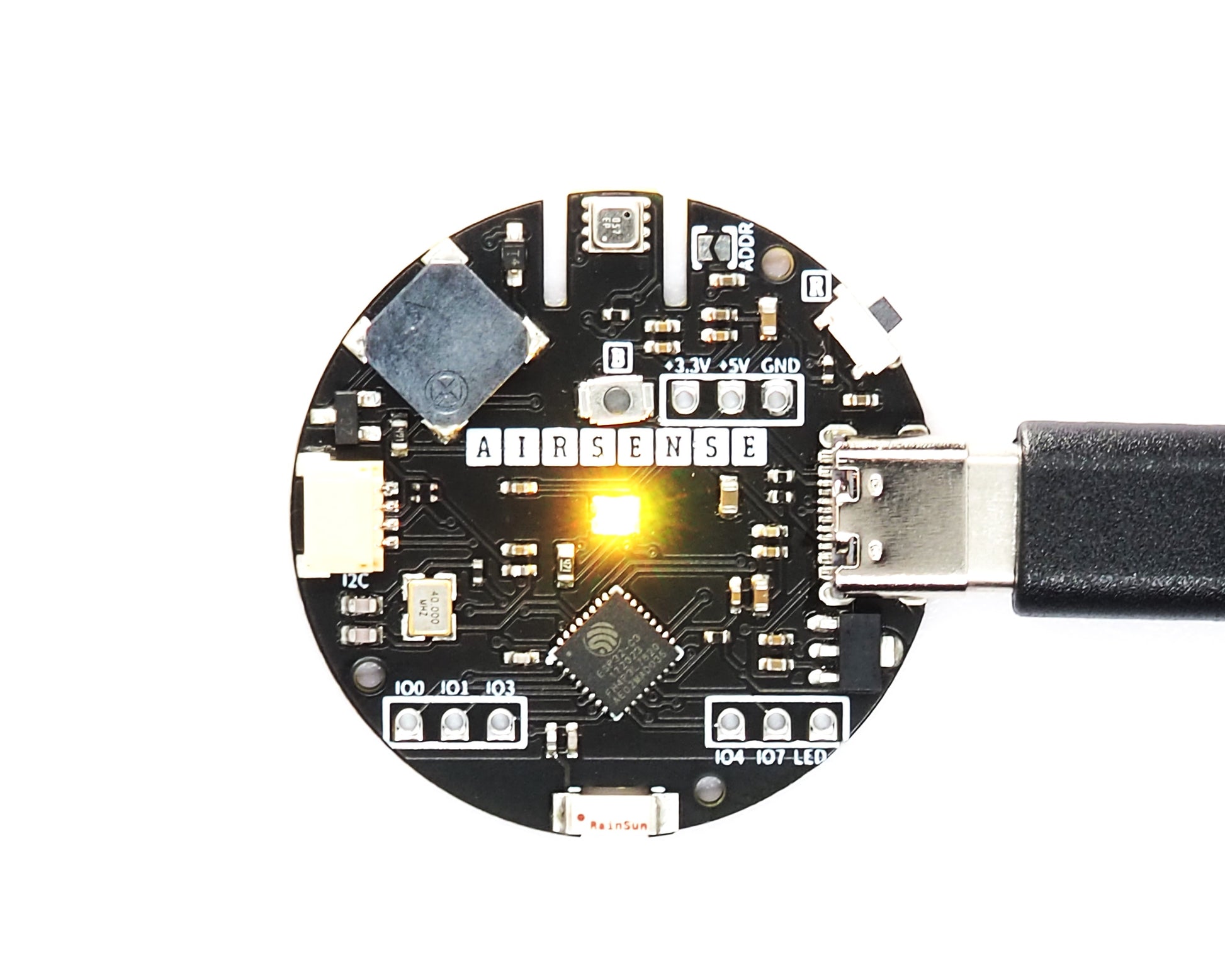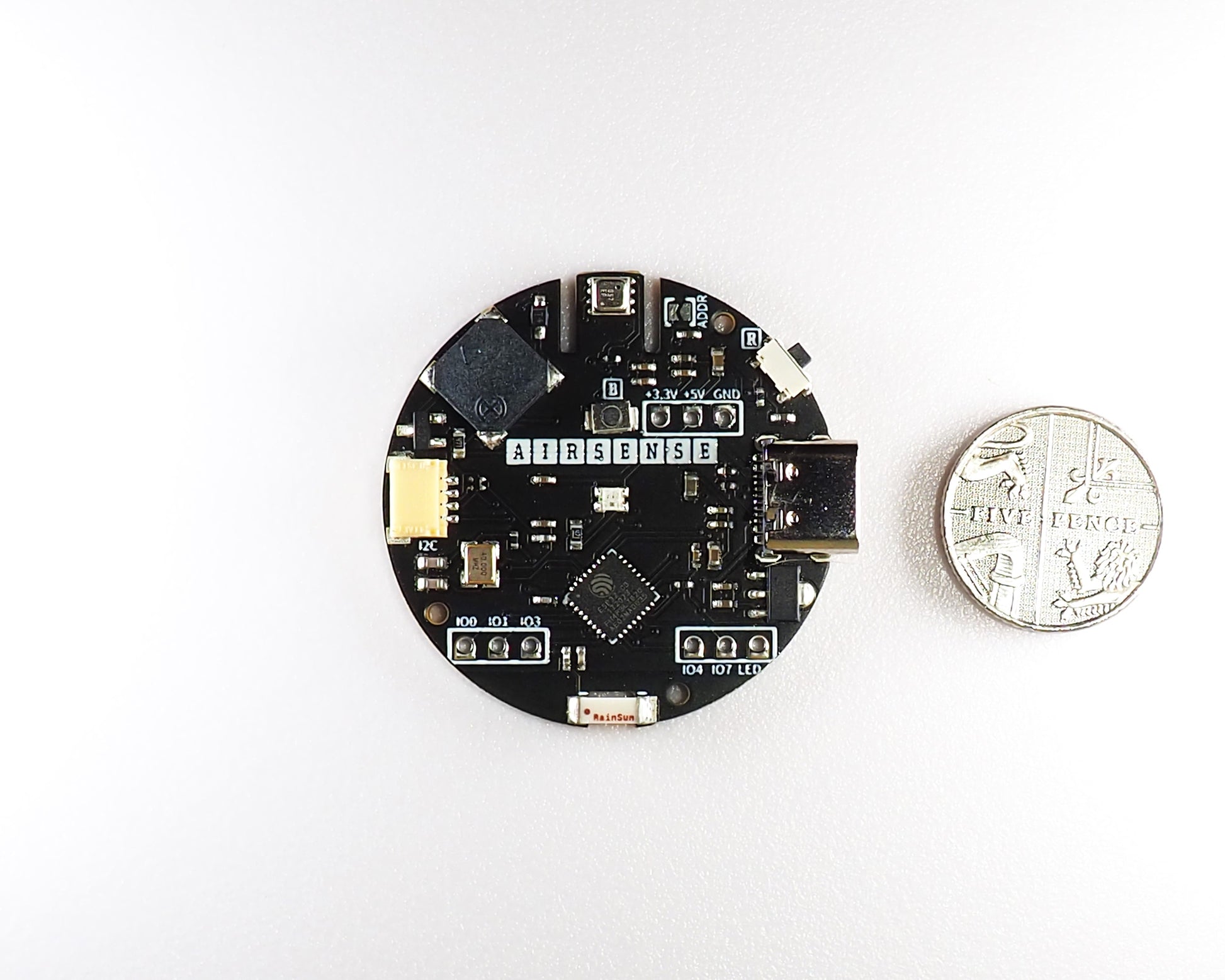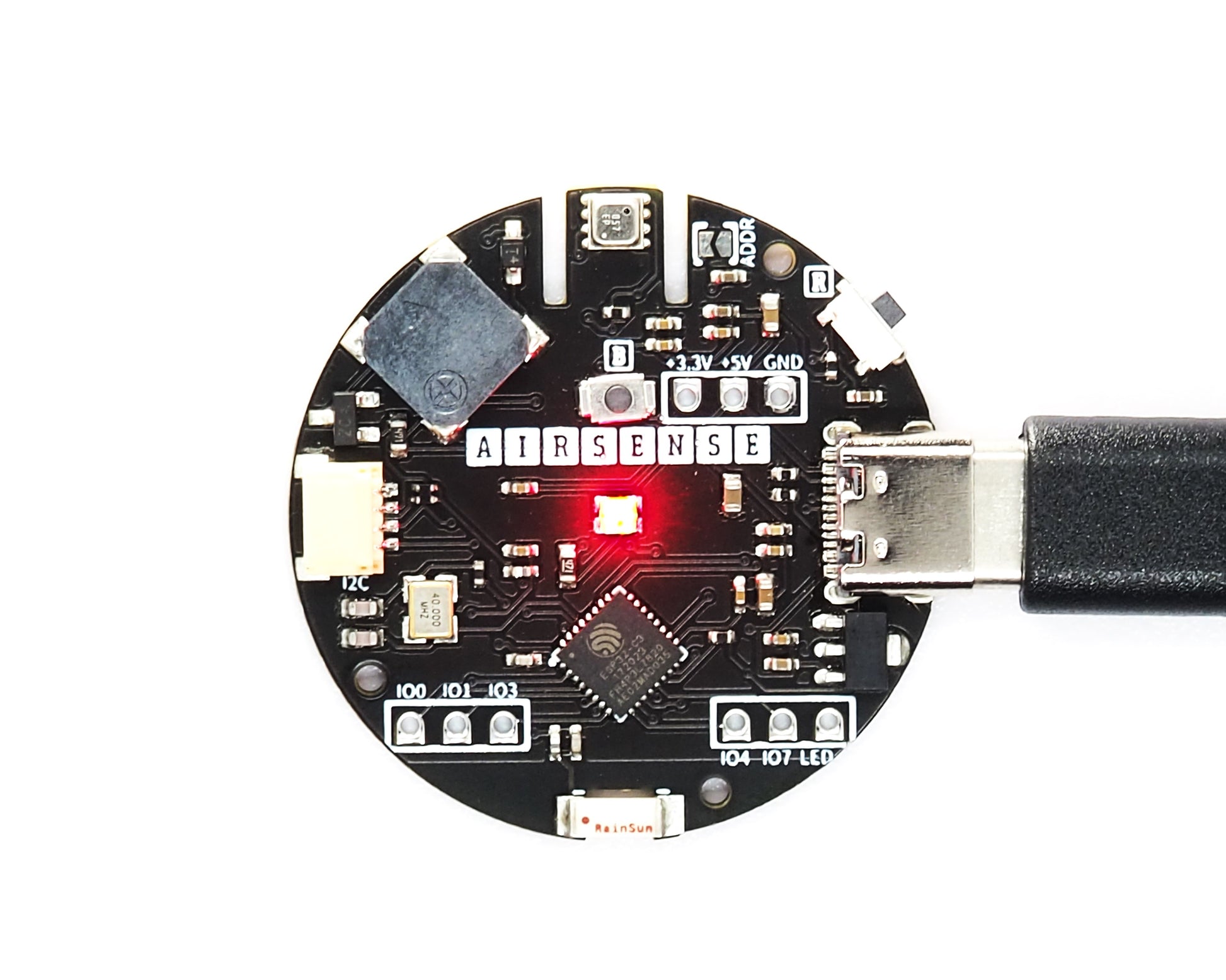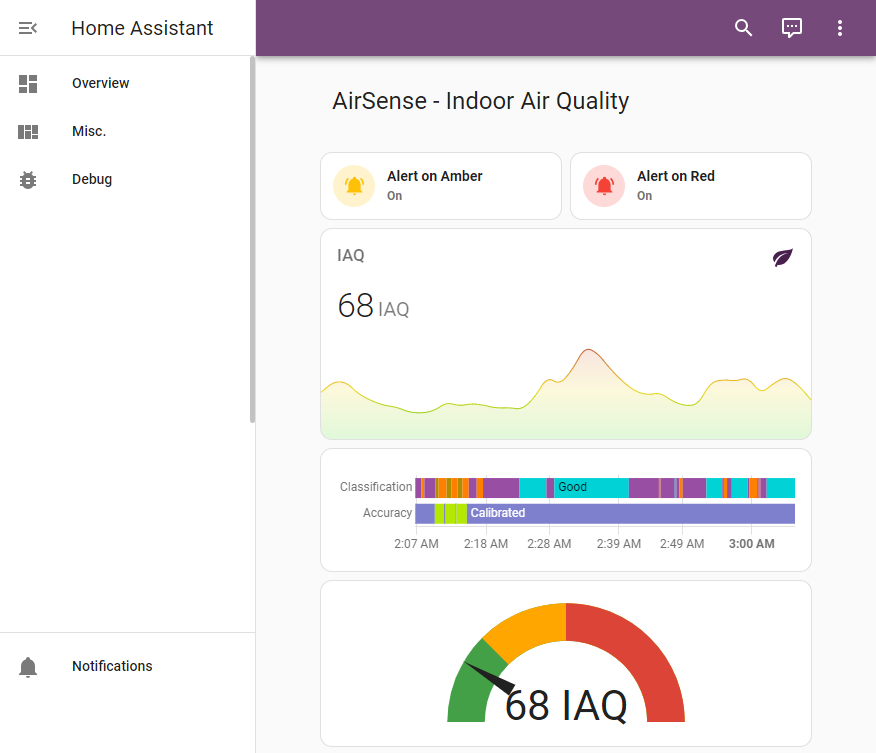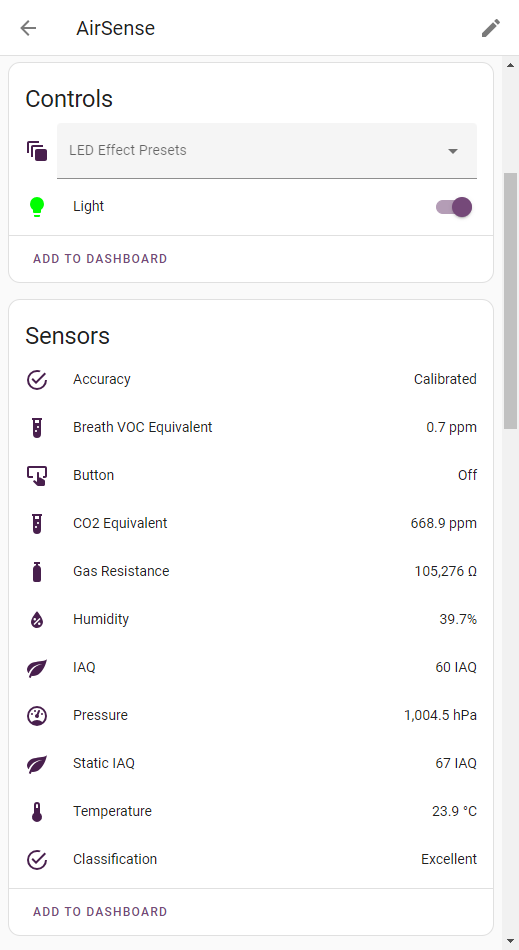AirSense
AirSense
Couldn't load pickup availability
Share
Introducing AirSense, the indoor air quality sensor. The perfect solution for monitoring the air quality in your home or office that is also compatible with ESPHome and Home Assistant. This sensor is equipped to provide accurate readings of indoor air quality, temperature, pressure, humidity, bVOCeq and CO2eq. And if that's not enough, it also features an RGB LED and a buzzer to alert you when the air quality is not optimal.
Whether you are concerned about allergies, asthma, or other health issues, AirSense is the ideal choice. Its advanced technology, LEDs and buzzer make it easy to monitor and maintain healthy indoor air quality.
Features:
- Indoor Air Quality Sensor
- bVOCeq Sensor
- CO2eq Sensor
- Temperature Sensor
- Humidity Sensor
- Pressure Sensor
- RGB LED
- Buzzer
- I²C STEMMA QT/Qwiic Connector
- 5 Additional GPIO's
- Wi-Fi
- Bluetooth BLE
- USB-C
- Small Form Factor (3.5cm diameter)
- Home Assistant/ESPHome Ready
- Open-source Code
- Easily Reprogrammable
Getting Started
Setup instructions and configuration for the AirSense can be found here:
https://github.com/LoopOnCode/AirSense
Click the button below to import the Home Assistant Blueprint for AirSense:
Sensor Specifications
| Sensor | Min | Max | Unit |
| Temperature | -40 | 85 | °C |
| Humidity | 0 | 100 | % |
| Pressure | 300 | 1100 | hPa |
GPIO
Extension Pins
| Pin | Type | ADC/RTC | PU/PD | PWM |
| GPIO0 | In/Out | Yes | Yes | Yes |
| GPIO1 | In/Out | Yes | Yes | Yes |
| GPIO3 | In/Out | Yes | Yes | Yes |
| GPIO4 | In/Out | Yes | Yes | Yes |
| GPIO7 | In/Out | Yes | Yes |
ADC: these pins can be used as ADC inputs
RTC: these pins are RTC GPIOs and can be used in deep-sleep mode
PU/PD: these pins have software configurable pull-up/pull-down functionality.
Misc
| Pin | Type |
| GPIO2 | RGB LED |
| GPIO5 | I²C SDA |
| GPIO6 | I²C SCL |
| GPIO10 | Buzzer |
Power
| Pin | Type |
| +5V | In/Out (max. 5V) |
| +3.3V | Out only |
Sensor Address Selection
The I²C address of the sensor that reads gas, temperature, pressure and humidity can be altered if it conflicts with another I²C component you have added to the board. To do this, you must solder the ADDR pad.
Addresses:
- Unsoldered: 0x77
- Soldered: 0x76
ESP32
At the heart of the AirSense board is an ESP32-C3F with 4MByte of flash running at a clock speed of 160MHz. It has 2.4 GHz Wi-Fi and Bluetooth 5 (LE) connectivity.
Datasheets
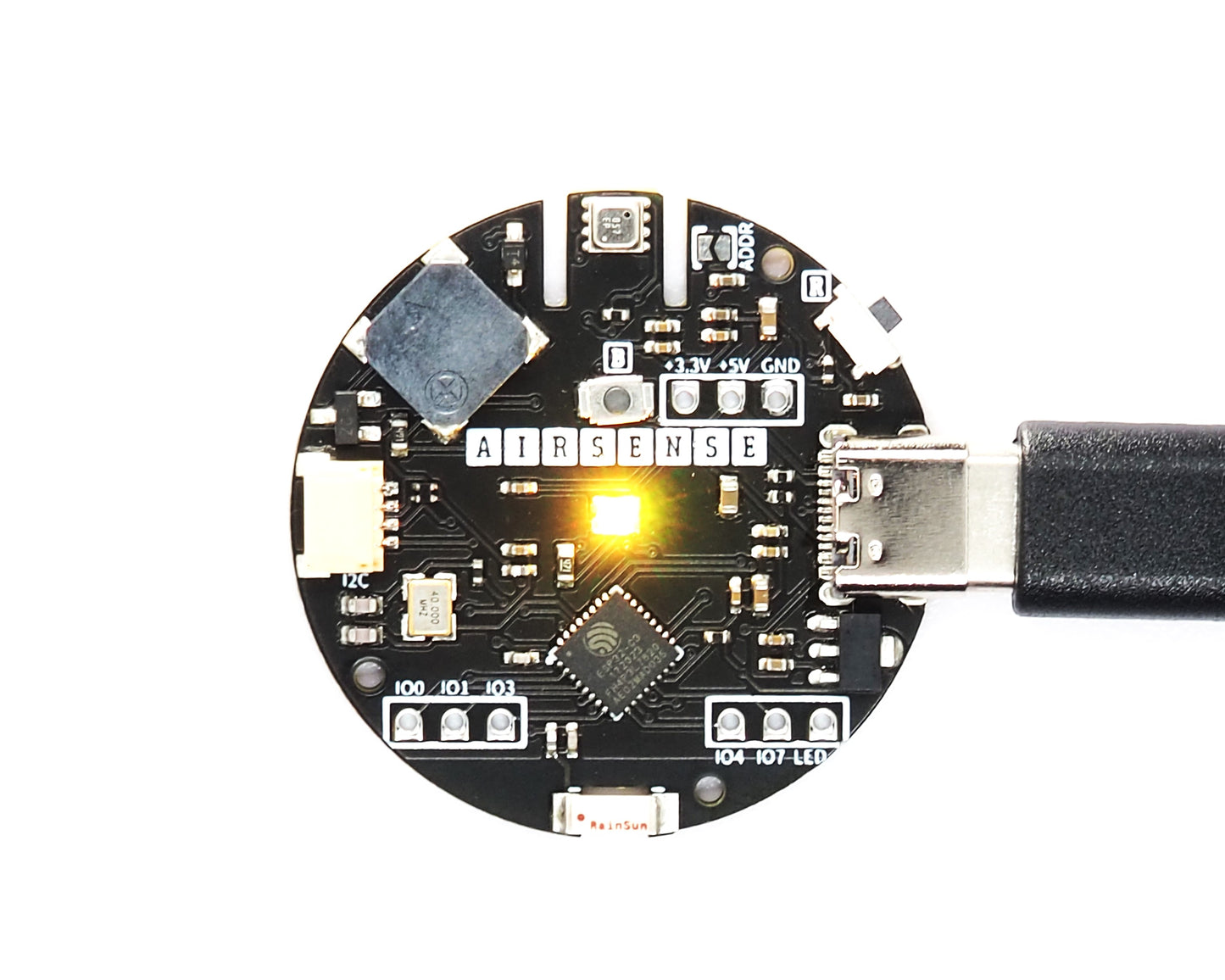
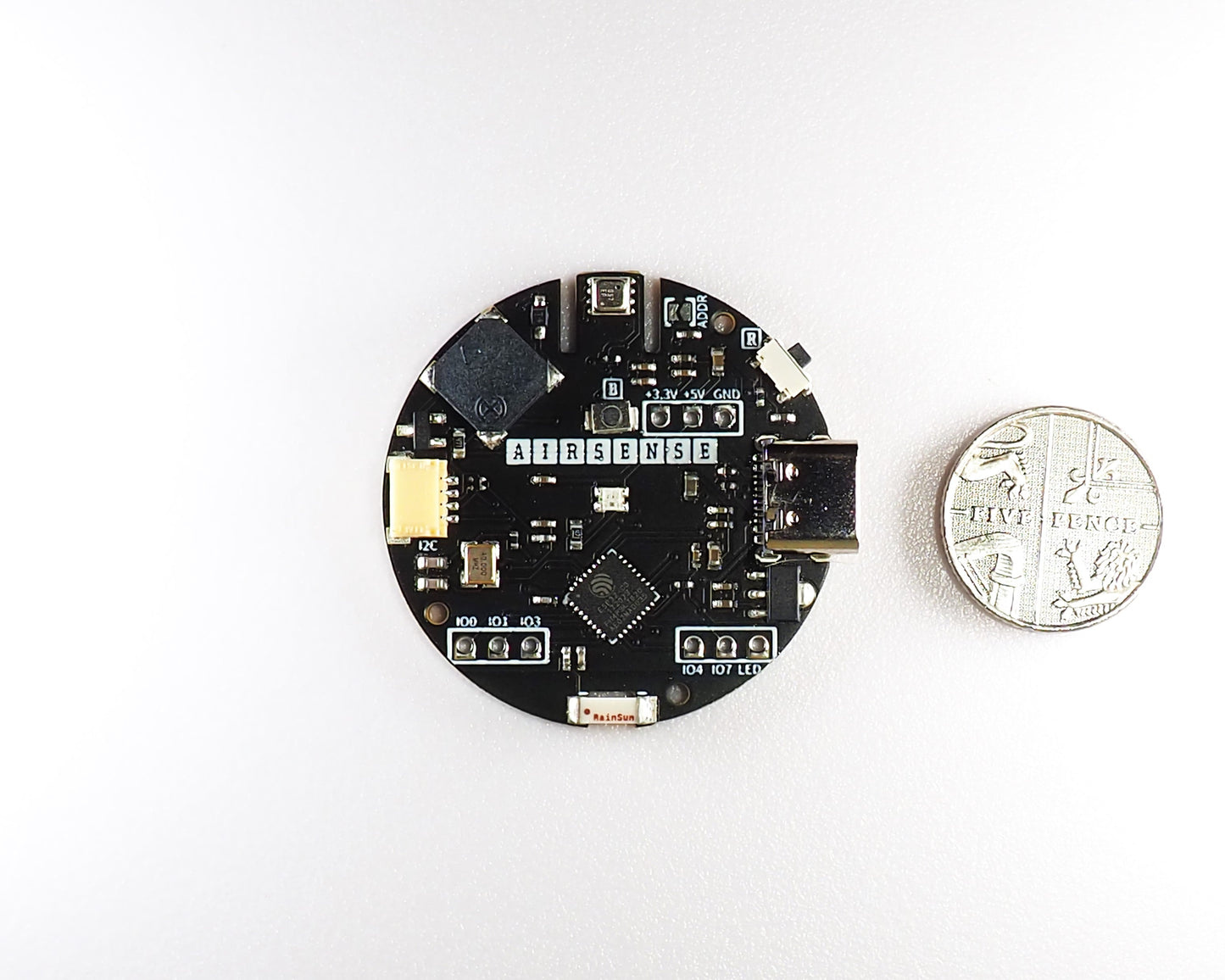
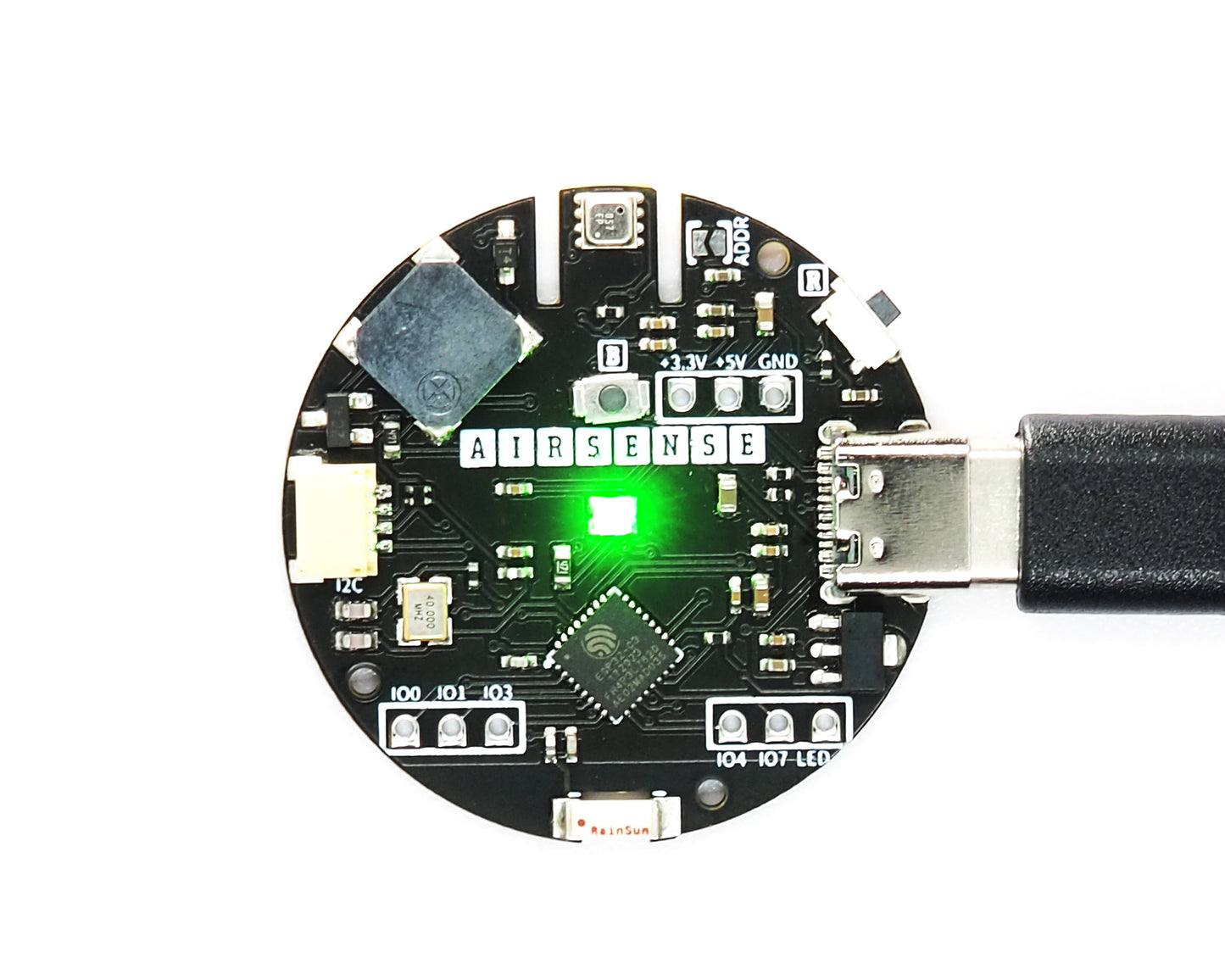
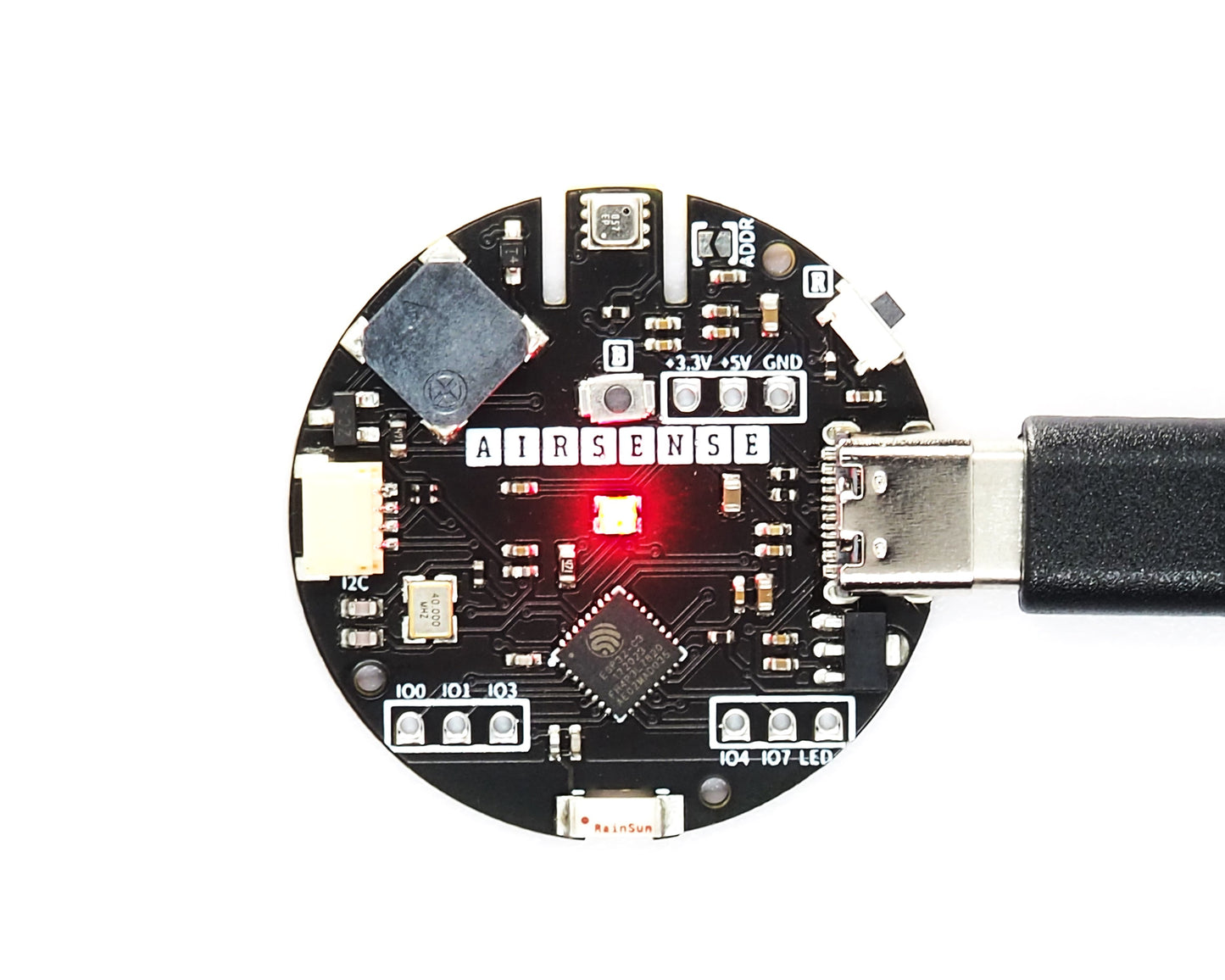
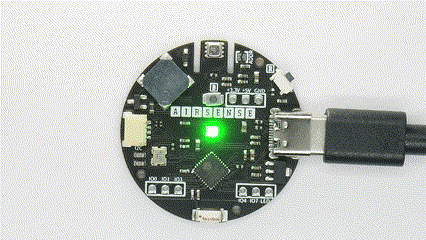
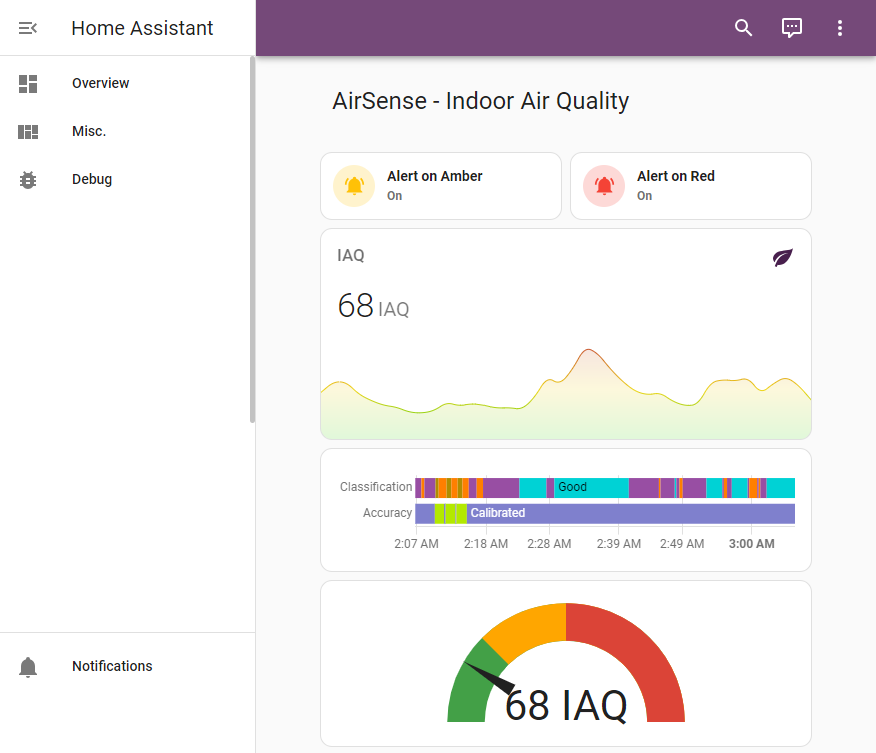
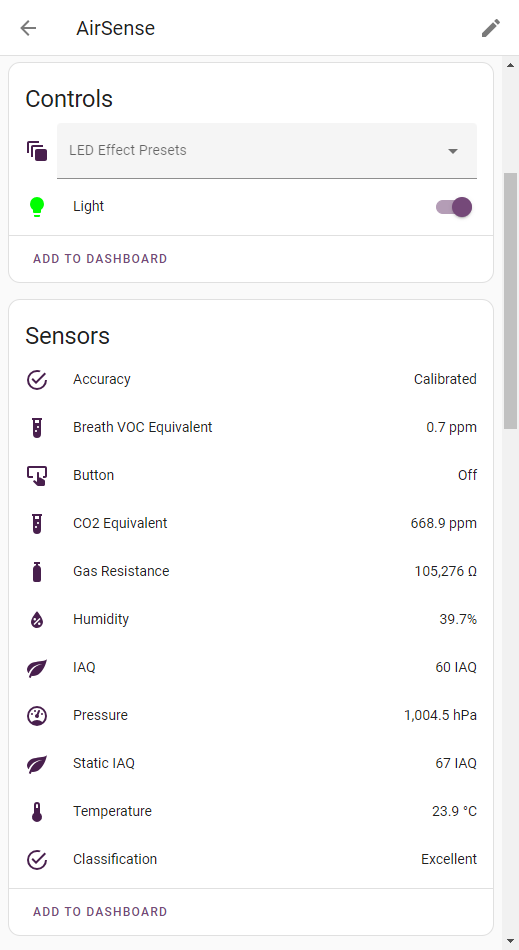
I got this working with Home Assistant mainly for CO2 monitoring, works well and I love the buzzer and LED as extra 'indicators'
Use for CO2 monitoring and like the led colour to indicate status.

